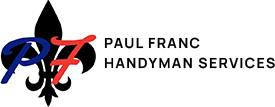Hey there, fellow DIY enthusiasts and property owners! Let’s talk about something that often hides behind our walls but plays a significant role in our homes and offices: drywall. Whether you’re building a new space or giving an old one a facelift, understanding how to install and repair drywall is essential. In this comprehensive guide, we’ll cover everything you need to know to tackle drywall projects like a drywall handyman.
Understanding Drywall
Drywall, also known as gypsum board or wallboard, is a ubiquitous building material used for interior walls and ceilings. It consists of a core of gypsum plaster pressed between two layers of thick paper. This versatile material provides a smooth, durable surface for painting, wallpapering, or applying texture.
The Importance of Proper Installation
Proper drywall installation is crucial for maintaining the structural integrity and aesthetics of a property. Hiring a drywall handyman can ensure a professional finish. I learned this firsthand when I attempted to cut corners during a renovation project. Rushing through the installation process led to uneven seams and unsightly bulges in the walls, requiring extensive repairs later on.
Signs of Drywall Damage
Identifying signs of drywall damage early can save you time, money, and headaches down the road. From small cracks and holes to water damage and mold growth, keeping an eye out for these issues is key. Once, I neglected a minor water stain on the ceiling, thinking it was harmless. Before long, it spread, causing extensive damage and requiring costly repairs by a drywall handyman.
DIY vs. Professional Repair
When it comes to drywall repair, deciding between a DIY approach and hiring a drywall handyman is a common dilemma. While minor repairs like patching small holes may be DIY-friendly, more extensive damage or complex projects often require professional expertise. After a botched repair attempt left me with uneven patches and mismatched textures, I learned the value of calling in a drywall handyman for certain jobs.
Tools and Materials Needed for Repair
Before diving into a drywall repair project, it’s essential to gather the right tools and materials. Basic items like drywall compound, sandpaper, a putty knife, and drywall tape are must-haves. Investing in high-quality tools can make the job easier and ensure better results. I once tried to patch a hole with low-quality compound and ended up with a messy, lumpy finish that required redoing the entire repair by a drywall handyman.
Step-by-Step Repair Guide
Now, let’s walk through the process of repairing common drywall issues step by step:
1. Patching Small Holes and Cracks
- Clean the area around the hole or crack.
- Apply a thin layer of drywall compound over the damaged area.
- Place drywall tape over the compound and smooth out any air bubbles.
- Apply a second layer of compound, feathering the edges to blend with the surrounding wall.
- Sand the patched area until smooth and paint to match the rest of the wall.
2. Repairing Water Damage and Mold
- Cut out the damaged section of drywall and ensure the area is dry and mold-free.
- Replace the damaged drywall with a new piece, securing it in place with screws.
- Tape and mud the seams, blending them with the surrounding wall.
- Sand, prime, and paint the repaired area to finish.
3. Smoothing Out Rough Surfaces and Imperfections
- Apply a thin layer of drywall compound over the rough surface, filling in any imperfections.
- Sand the area smooth once the compound is dry.
- Repeat the process, if necessary, until the surface is even and smooth.
- Prime and paint the wall for a seamless finish.
Drywall Installation Process
Installing drywall involves several steps, including measuring and cutting the sheets, attaching them to the wall or ceiling studs, taping and mudding the seams, and finishing with texture or paint. While it may seem straightforward, precision and attention to detail are crucial for a professional-looking result. Hiring a drywall handyman can ensure this level of detail. I once rushed through the installation process, resulting in uneven seams and misaligned panels that required extensive rework.
Safety Considerations
Safety should always be a top priority when working with drywall. Dust masks, safety goggles, and gloves are essential for protecting against dust, debris, and potential injury. Additionally, be cautious when handling power tools and working on ladders or scaffolding. I once underestimated the importance of safety gear and ended up with irritated lungs and eyes after a day of sanding without a mask.
Common Mistakes to Avoid
Avoiding common pitfalls can save you time, money, and frustration during drywall projects. Some common mistakes to watch out for include using improper techniques, neglecting surface preparation, and rushing through the process. Learning from my own mistakes, I’ve come to appreciate the value of patience and thoroughness when working with drywall.
When to Call a Drywall Handyman
While DIY repairs can be rewarding, certain situations call for the expertise of a drywall handyman. If you’re dealing with extensive damage, structural issues, or intricate textures, it’s best to leave it to the pros. Hiring a drywall handyman not only ensures quality results but also saves you time and hassle in the long run.
Conclusion
Drywall installation and repair may seem daunting at first, but with the right knowledge and tools, you can tackle projects with confidence. Whether you’re patching a small hole or finishing an entire room, taking the time to do it right pays off in the end. Remember, practice makes perfect, so don’t be afraid to start small and work your way up to larger projects. With patience, persistence, and a bit of know-how, you’ll be a drywall pro in no time!
Additional Tips from a Seasoned Handyman
- Regular Maintenance: Keep your drywall in top condition by periodically inspecting for damage and addressing issues promptly.
- Upgrade Options: Consider upgrading to moisture-resistant or fire-resistant drywall for areas prone to water damage or fire hazards.
- DIY Prevention: Take preventive measures to avoid future damage, such as installing corner guards to protect vulnerable areas or reinforcing high-traffic walls with additional studs.
Suggested Articles

(805) 507-3384





Everything is very open with a really clear explanation of the challenges. It was definitely informative. Your website is useful. Thanks for sharing!
You made a good point that the kinds of tools that will be needed when planning to get basement drywall installation services. I’d like to find a good service like that because I’m thinking about getting my basement decluttered soon. Adding drywalls there will help a lot in organizing the layout of the room better.